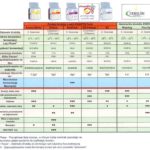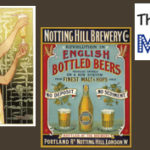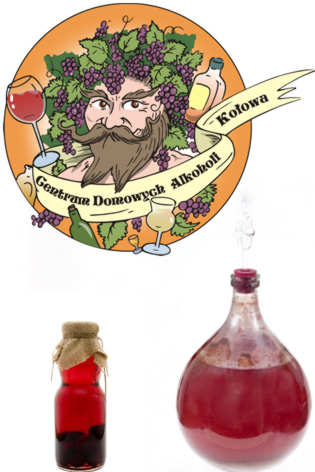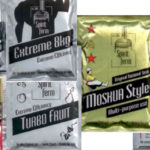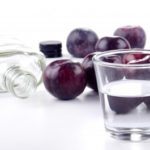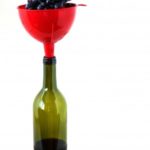Dlaczego drożdże sklepowe są lepsze od dzikich?
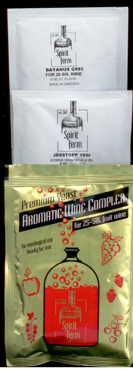 Mimo wielu możliwości, jakie daje fermentacja spontaniczna, w domowej produkcji alkoholu o wiele korzystniej oceniane są drożdże sklepowe. Oczywiście szczepy dzikie są niezastąpione na przykład przy produkcji cydru, niemniej większość trunków o wiele łatwiej i z lepszym rezultatem można wyprodukować przy pomocy gotowych preparatów grzybów.
Mimo wielu możliwości, jakie daje fermentacja spontaniczna, w domowej produkcji alkoholu o wiele korzystniej oceniane są drożdże sklepowe. Oczywiście szczepy dzikie są niezastąpione na przykład przy produkcji cydru, niemniej większość trunków o wiele łatwiej i z lepszym rezultatem można wyprodukować przy pomocy gotowych preparatów grzybów.
Łatwość przygotowania
Każda paczka drożdży sklepowych jest wyraźnie opisana i znajdziesz tam także instrukcję przygotowania matki drożdżowej. W przypadku drożdży dzikich nigdy nie wiesz, jaki szczep skolonizuje surowiec i czy w ogóle jakiś będzie na tyle silny, aby poprowadzić fermentację. To ważne, ponieważ z inokulacją drożdżami nie można czekać – musi się ona odbyć sprawnie i w krótkim czasie. To niewątpliwa zaleta drożdży kupnych, tak samo, jak fakt, że ich właściwości są znane z góry. Już w sklepie możesz dobrać właściwe drożdże do konkretnego trunku. Kryteria wyboru można stosować dowolnie: maksymalne stężenie alkoholu, właściwości organoleptyczne trunku, szybkość fermentacji, ilość drożdży, jaką trzeba dodać, ich forma – to wszystko jest wiadome już wtedy, kiedy weźmiesz do ręki opakowanie z drożdżami. Otrzymujesz tak naprawdę gotowy półprodukt, a w przypadku drożdży dzikich tylko wielką niewiadomą.
Skuteczność jest wyższa
Drożdże piwowarskie, winiarskie czy gorzelniane to szczepy wyselekcjonowane specjalnie pod kątem przydatności w przygotowywaniu konkretnych trunków. Ich specjalizacja wyraża się oczywiście pewnymi właściwościami grzybów, a jej pochodną jest już omówiona łatwość zastosowania. W przypadku drożdży dzikich równie prawdopodobne jest, że przeżyją one tylko 4% stężenie alkoholu, jak i 14% (może z odchyleniem prawdopodobieństwa w stronę niższej granicy). Zawsze jednak jest niemal całkowita pewność startu procesu w przypadku gotowych drożdży, a to, czy drożdże dzikie będą skutecznie przerabiały cukier na alkohol, pozostanie niewiadomą aż do zakończenia okresu, w jakim fermentacja powinna przebiegać. Większe są także odchyły w wysokości stężenia alkoholu – kupne drożdże pracują równo, a dzikie znów płatają figle.
Po prostu czystsze
Czystość, której poświęciłem naprawdę wiele miejsca w swoich artykułach, jest dla jakości trunku czynnikiem absolutnie niezbędnym. W przypadku inokulacji dzikimi drożdżami pojawia się problem – zanieczyszczenie środowiska, i to zarówno chemiczne, jak i biologiczne, jest dość znaczne i to może stanowić dla drożdży barierę nie do pokonania. Nawet zakładając, że akurat masz to szczęście i możesz teoretycznie wykorzystać dzikie drożdże, to jeśli wraz z nimi dostaną się do surowca na przykład komórki drożdży kożuchujących albo pewnych bakterii, to korzystne drożdże nie będą w stanie fermentować, proces będzie nisko wydajny, albo po prostu produkty przemiany materii dodatkowych mikroorganizmów zepsują smak trunku. Nie pomoże tutaj czyszczenie sprzętu, ponieważ zanieczyszczenia dostaną się do surowca później. Jeśli skorzystasz z gotowych drożdży, wyselekcjonowanych i oczyszczonych, to ryzyko zakażenia będzie minimalne, bliskie zera, jeśli zachowasz odpowiednie środki ostrożności. Oczywiście zawsze pojawią się jakieś inne organizmy niż tylko niezbędne i pomocne drożdże, ale w przypadku gotowych drożdży piwowarskich czy winiarskich nie będą one w stanie rozwinąć swojej aktywności w wystarczająco dużym stopniu, aby zaszkodzić jakości trunku.
Wybór należy do Ciebie
Nie chcę Cię zniechęcać do eksperymentów z dzikimi drożdżami, ale jeśli zależy Ci na wysokiej skuteczności produkcji i zadowoli Cię jakość klasycznych trunków, to powinieneś zdecydować się na drożdże gotowe. Dzikie to jakby następny stopień wtajemniczenia – utrudnienie dla tych, którzy na produkcji alkoholu znają się doskonale, ale standardowymi metodami nie są w stanie osiągnąć ideału.
Znaleziono w Google poprzez frazy:
- dzikie drożdże a jakość destylatu

